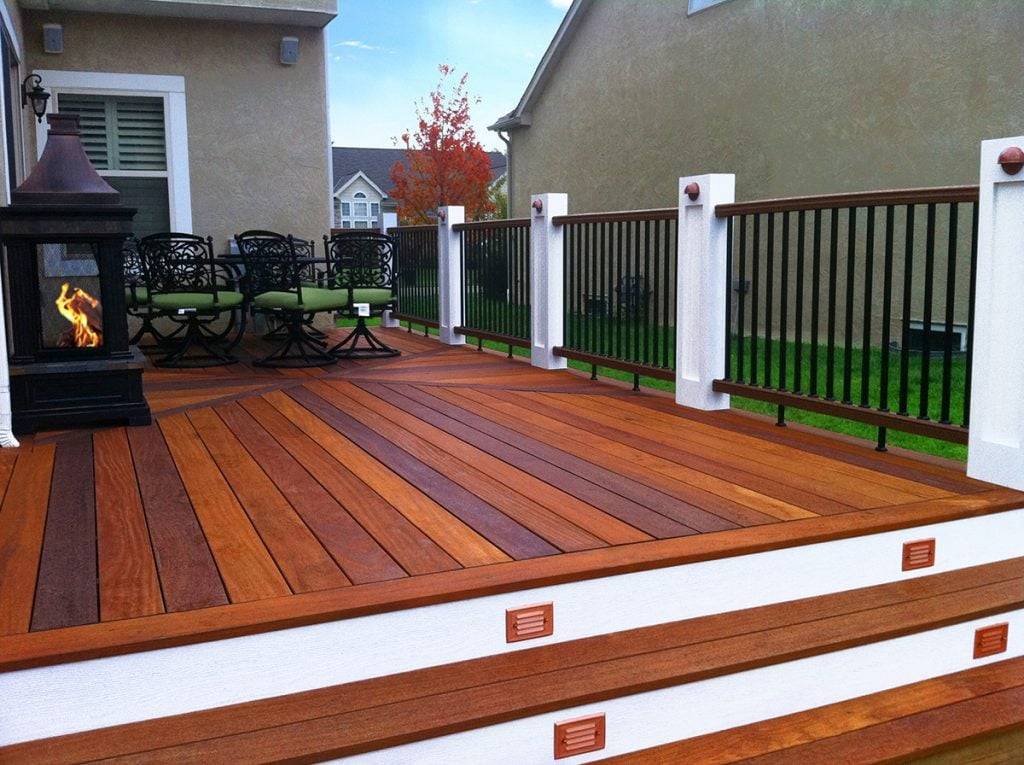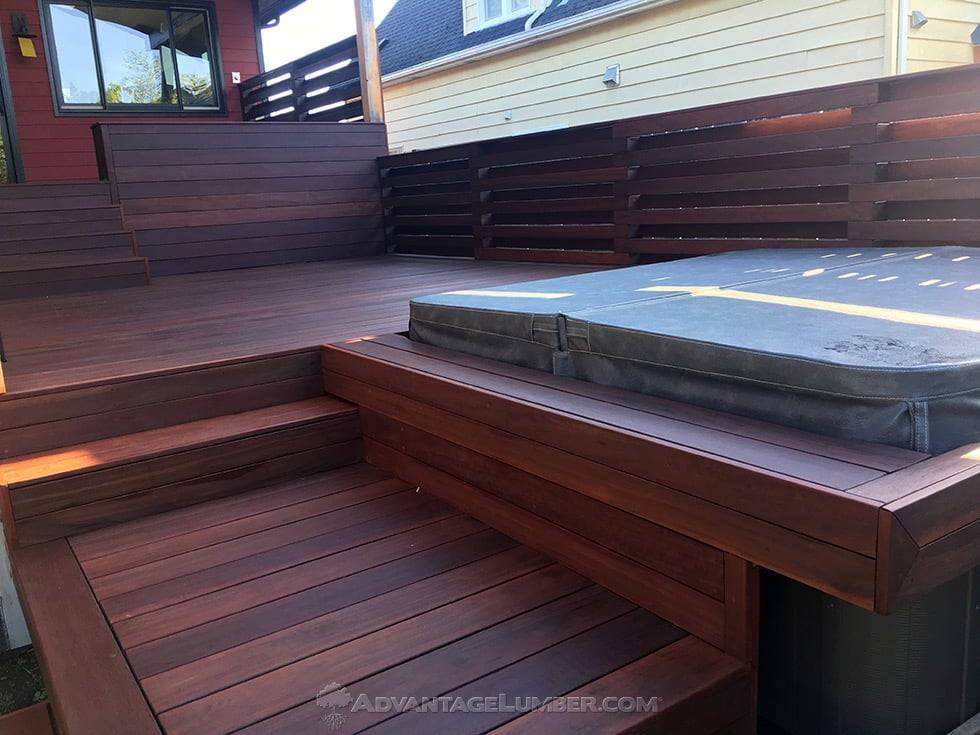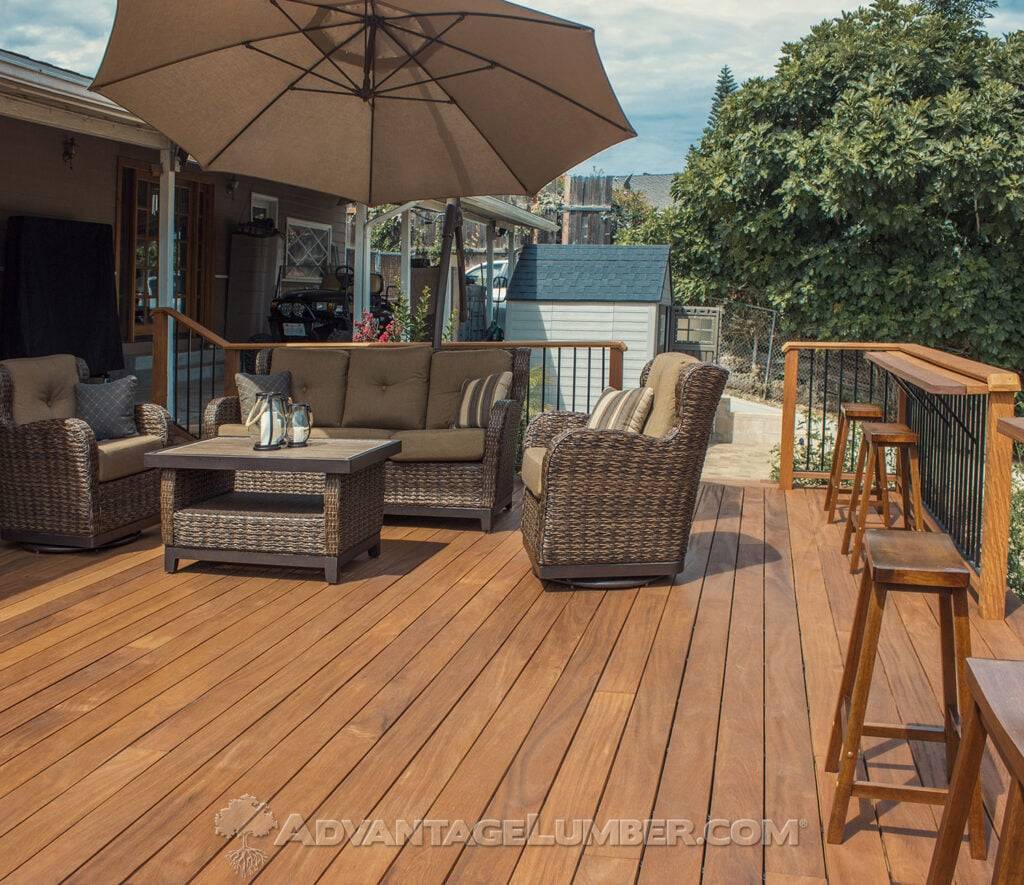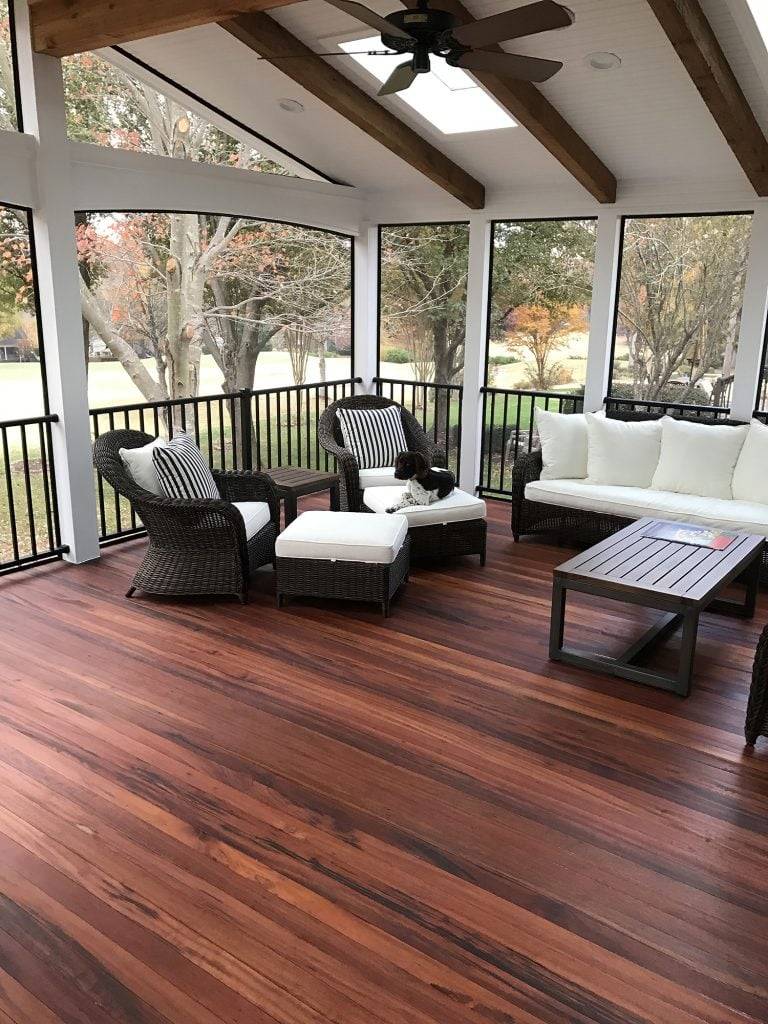When it comes to outdoor projects, such as decks, fences, and exterior furniture, or even indoor areas exposed to moisture, like bathrooms and kitchens, one thing you don’t want to have to worry about is rot.
Fortunately, there’s a range of wood species that boast high resistance to rot, and here, we will explore some of the most popular options, from Ipe to Yellow Balau.
1. Ipe Wood

Often referred to as Brazilian Walnut, Ipe is renowned for its extreme hardness and durability, earning it top marks for rot resistance. It’s a dense wood, with a Janka hardness of approximately 3,684 lbf, and it can last upwards of 50+ years without any chemical treatments. Due to its density, it can be difficult to work with and may blunt tools. Its natural hue ranges from reddish-brown to olive-brown.
2. Teak

Teak has been the gold standard for millennia when it comes to rot-resistant wood. Not only does it stand up well to moisture and decay, but it also resists pests, including termites. Teak has a warm, golden color that ages to a fine silver-gray over time, and its moderate hardness (around 1,000 lbf on the Janka scale) makes it fairly easy to work with.
3. Cumaru

Also known as Brazilian Teak, Cumaru is a hardwood that is comparable to Ipe in terms of its durability and resistance to rot. Its Janka hardness is around 3,540 lbf, and it can hold up against the elements for decades. It tends to have a more varied color range than Ipe, from yellowish-brown to reddish-brown, often with distinctive streaks.
4. Brazilian Redwood

Brazilian Redwood, or Massaranduba, is another tropical hardwood that offers excellent resistance to rot. With a Janka hardness of around 3,190 lbf, it’s a very dense wood. Its deep reddish-brown color can provide a striking aesthetic appeal.
5. Tigerwood
As the name suggests, Tigerwood boasts dramatic striping that can resemble a tiger’s stripes. It’s not just about looks, though, as this South American wood is also highly resistant to decay and pests. With a Janka hardness of 2,170 lbf, Tigerwood is a dense hardwood, and its color can range from reddish-brown to light golden brown.
6. Garapa

Garapa, also known as Brazilian Ash, is a durable, dense hardwood (with a Janka hardness of 1,650 lbf) that offers good rot resistance. It’s slightly less hard and dense than the likes of Ipe and Cumaru, which makes it somewhat easier to work with. In terms of color, Garapa has a bright golden to yellowish-brown hue.
7. Mahogany (Red Balau)

Mahogany Red Balau is a Southeast Asian hardwood known for its durability and resistance to decay and insects. Its Janka hardness is around 2,100 lbf. Red Balau has a distinctive red hue, which can bring warmth and richness to any project.
8. Golden Mahogany (Yellow Balau)

Finally, Golden Mahogany (Yellow Balau) is another Southeast Asian hardwood that is often used for decking due to its rot resistance. It has a Janka hardness of around 2,100 lbf, the same as its red cousin. Golden Mahogany is typically a light to medium brown, with an occasional slight reddish hue.
In conclusion, these are just some of the many species of wood that offer rot resistance. While they may require a more significant upfront investment, their longevity and minimal maintenance needs can make them cost-effective choices in the long run.
Always consider the specific needs of your project and environment, and where possible, source your wood from responsible, sustainable sources to ensure our forests continue to thrive for generations to come.
